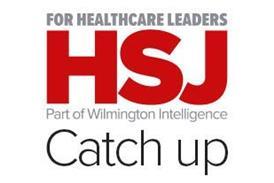As advancing technological developments facilitate remote working and machinery becomes smaller and smaller, the use of rooms and buildings can be more cost effective. By Alison Moore

Buildings tend to be seen as fixed points in NHS provision: difficult and expensive to change, and suitable only for a limited range of uses.
But is the NHS taking the wrong approach to estate management by not looking ahead to ensure its estates can cope with technological advances and changing demands for healthcare?
Nigel Edwards, now chief executive of the Nuffield Trust, argued in a King’s Fund paper last year that the NHS needed to look at other options for the design of healthcare facilities, and to work more in partnership with services that are being provided outside the traditional settings.
‘Models of care are still designed around buildings but could rethinking the way the NHS uses its estate catalyse change?’
Estates strategy needs to be more closely connected to service planning, he argues. “There’s less spare property than there used to be,” Mr Edwards says. “But the big issue is that if we look across health economies there are large amounts of underused estate - and much of that is used 9-5.
“I still see people with their own office who are only there twice a week and rooms for minor surgery that are used by a GP every other Wednesday.”
He points to the £4bn backlog of maintenance, the over-specification of some areas that increases costs and makes it difficult to change use, and the underuse of some facilities.
“Models of care are still designed around buildings but could rethinking the way the NHS uses its estate catalyse change,” he asks.
- HSJ’s Value in Healthcare Awards 2014
- Estate management: Get your foot in the door
- The tricky landscape of NHS properties, a year on from major reforms
All change
A wide range of technological advances are already changing how healthcare is delivered and how health professionals work. This is beginning to have an impact on the physical structure the NHS needs, and will continue to do so.
Richard Darch, executive director of health at Capita, says: “The technology is becoming more complicated but the buildings around that are becoming more simple.”
Fifteen years ago magnetic resonance imaging scanners needed purpose built buildings to house them; now scanners, and diagnostic equipment generally, is much more advanced but can be accommodated more easily, fitting into many rooms.
Linked with this is the shift of care closer to home. This can incorporate consultations moving to more convenient locations and diagnostic tests being done closer to the patient, which can impact on hospitals.
‘There are opportunities for trusts to better shape their estate to meet patient needs and release land’
This can mean a hospital no longer has to house the equipment and associated staff - but can also raise questions about where some of the interpretative side of diagnostics should be based. If a scan is taken in a community hospital or by a mobile unit, then transmitted digitally, the radiologist who “reads” it can be based anywhere - even in another time zone.
Centralised pathology laboratories serving several hospitals for “cold” work can be outside of a hospital setting. A pathology hub is now carrying out non-urgent work for two hospital trusts in the South West while more urgent work is done on site.
Many community trusts are already equipping staff for mobile working - giving district nurses and other staff handheld computers that enable them to work remotely and reduce the need to come into a central office. This means demand for office space is reduced.
This offers tremendous opportunities for trusts to better shape their estate to meet the needs of patients and potentially release space and land. Trusts need to consider their unique circumstances.
“Ask yourself what is the technology you need and what are the buildings you need around that?” suggests Mr Darch. “How does that impact on the property you have now and how does that need to change?”
Some hospitals will be able to release property or land for sale. Money raised can be used to reshape the remaining estate to enable the trust to meet changing needs. One idea, suggested recently by think tank Demos, was that hospital land could be sold off to develop care homes for older people, including those whose care is financed by the state.
Matthew Williams-Gray on intelligent infrastructure
The NHS faces unprecedented challenges.
The demographic shift, the emphasis on personalised and localised care, a legacy estate that is not fit for purpose and hinders more efficient working practices, combined with the need to improve quality, efficiency and productivity in challenging economic conditions all mean the NHS needs to continue to review how and where services are best delivered.

Some NHS trusts are approaching these challenges by taking a whole system redesign approach, integrating innovative models of care, estate reconfiguration and emerging technology in new and exciting ways.
These three elements will have a profound impact on the way our healthcare estate is configured over the next decade and presents a major opportunity to facilitate the way clinical services are delivered.
The implications of this approach, however, mean that development of the current NHS estate, with all the issues of backlog maintenance and compliance, sustainability, variability in utilisation and suitability of function will need to be addressed in the following ways:
- Redesigned care pathways increasingly focus on ensuring clinical care is delivered in the most appropriate setting with specialist services and diagnostics being centralised and consolidated at larger hubs, supported with greater community based outpatient and therapy services.
- There is a need to develop embedded integrated technology within infrastructure projects to aid the delivery of both the clinical service model and estates management.
Evidence from both the UK and overseas demonstrates that integration of technology and infrastructure can support patient pathways and efficient working; contribute to improved patient outcomes and satisfaction; reduce spatial requirements; reduce operational costs; and improve overall institutional productivity. The savings released by this whole system redesign - such as from estate disposal receipts or reduced revenue cost - are being ploughed back into clinical services or used to fund the implementation of new technological advances.
Already some areas of the NHS are applying this whole system approach by developing an “intelligent” hospital infrastructure that integrates previously separate systems, improving the management of both the building and the user. The application and integration of such an infrastructure model in everyday practice is already demonstrating benefits, including:
- improved patient pathways via systems such as electronic check in and outpatient department management;
- aiding in the application models of integrated care by providing rapid access to diagnostic information, teleconferencing, e-consultation and other telehealth applications;
- allowing greater access to real time patient data and patient monitoring, resulting in more accurate clinical decision making and improved patient safety;
- enhancing the inpatient experience by giving patients greater autonomy and control over their environments;
- improving overall efficiency of the building via intelligent building management and energy monitoring;
- improving real time data streaming so NHS managers can pre-empt and mitigate against day to day operational challenges; and ultimately
- reporting higher patient satisfaction scores, reduced complaints and a reduction in clinical risk.
Some NHS institutions have already started the whole system redesign journey and can demonstrate examples of world class best practice that lead the way in “intelligent” infrastructure development. This work will play a vital role in addressing the challenges of delivering high quality, integrated and affordable healthcare for the future.
Dr Matthew Williams-Gray is director of strategic health consultancy in Capita’s health property team. Find out more
Releasing space
Ironically, areas with a newish hospital - likely to be private finance initiatives - may find it harder to make good use of unused space or buildings unless they are in a position to develop new services.
Releasing space within a PFI hospital will not impact on the bottom line unless it can be used differently in a way that can drive revenue. Moves that bring more services into the hospital - and take them away from other locations - can be politically fraught.
“There are some trusts that are sitting pretty; if you are a trust without a large PFI, are land rich and in the South East, you are laughing,” Mr Darch says.
Mr Edwards points out that where a trust is in a position to release space - because it no longer needs it - it can be difficult to attract tenants. Rents for these so called “stranded spaces” are often relatively expensive and tend to put off all but other health and social care providers.
Some areas, however, are starting to think in terms of a public sector-wide estates approach, which may bring benefits in the longer term.
‘A better interface with community services is required’
Mr Darch says there is also growing interest in health campus developments - sites that offer an array of different services (sometimes provided by more than one organisation) with an emphasis on diagnostics, urgent care and short stay services. These are common in other countries.
Having large numbers of beds can almost be seen as a sign of inefficiency, he says, particularly for elective care; it can show that whatever needs to be done for a patient has not been planned or organised. “An inpatient hospital bed is rarely appropriate for an extended stay and a better interface with community services is required,” he adds.
Mr Darch says trusts should consider working with a partner that can add value to this process. Capita has recently entered into a five year deal with Sussex Community Trust which aims to deliver £8m in savings over that time by transforming the estate to match its clinical needs. Capita will provide facilities services to the trust and some trust employees have transferred to it, under Transfer of Undertakings (Protection of Employment) - TUPE - arrangements.
Mr Darch is optimistic about the NHS’s physical infrastructure and ability to support and drive change. But technology will keep changing, he says; no solution will last forever or be a panacea to all the issues healthcare organisations will face.
Trusts must remain agile in their thinking and be prepared to revisit solutions and look across the range of opportunities and their impact on staff.
“It is about having a process in place for the long term,” he says. “You must keep evolving and understand what technology means.”

























1 Readers' comment